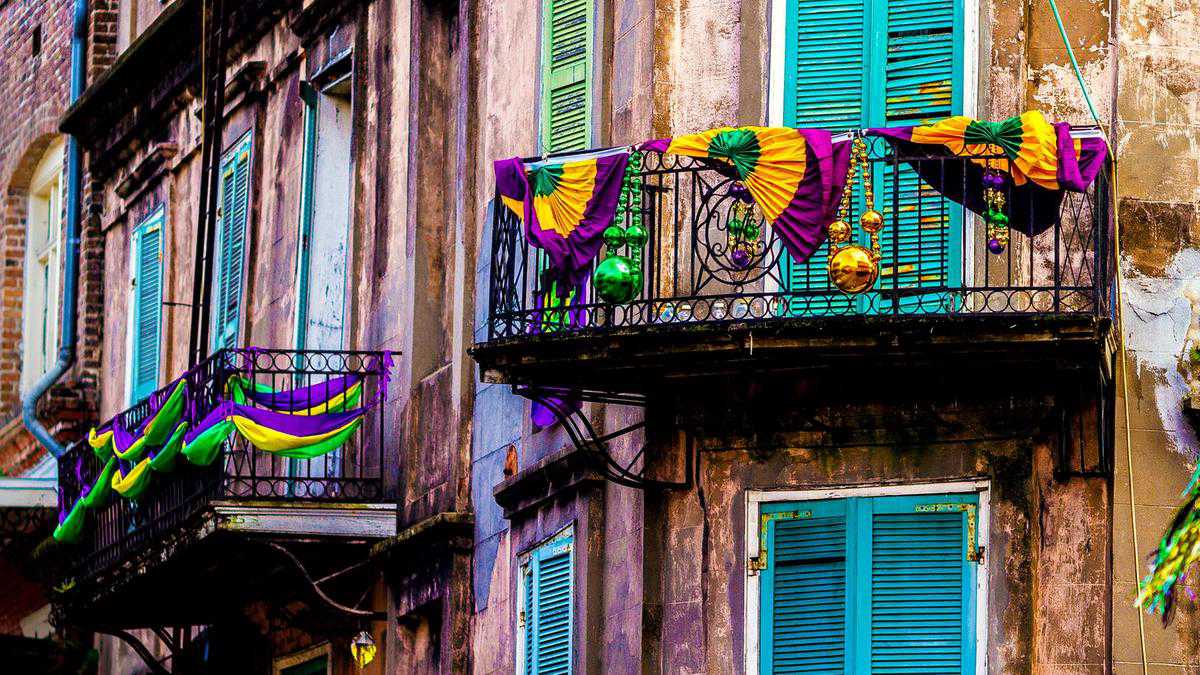24 hours in New Orleans
03 July, 2019

A soulful city deep in the American South, New Orleans is famous for its raucous street parties, jazz music and Mardi Gras Festival. A melting pot of cultures, the city has a rich musical and gastronomic heritage, brimming with African and Caribbean influences, along with an eclectic architectural style.
8am: A typical Nola breakfast
Grab melt-in-the-mouth powdery beignets – deep-fried choux pastries of French origin – and a strong cup of cafe au lait at the legendary Cafe Du Monde, which has been a New Orleans staple since 1862 (don’t let the long lines deter you). From there, stroll up to the Mississippi River to catch a glimpse of steamboats plying the river.
10am: Explore the French Quarter
Take a walking tour of the French Quarter, starting at the striking St Louis Cathedral which, with its stained glass windows and steeples, looks like it belongs in a Disney movie. Meander through streets lined with typical Louisianan architecture – a mix of French Colonial, Spanish and Creole styles – and ogle at the Creole townhouses with their cast-iron balconies decked with brightly coloured flowers.
There are also plenty of galleries, restaurants and cafes lining the streets; look out for Lafitte’s Blacksmith Shop in a red-brick cottage dating back to the 1700s and Madame John’s Legacy, a beautiful 18th-century Creole house that has been converted into a museum. Check out the art galleries and antique shops on Royal Street and take a peek inside the New Orleans Pharmacy Museum, a former apothecary from 1823 that now displays ancient cures, surgical instruments, journals and alternative medicines.
Along the way, you’ll probably catch sight of the odd clip-clopping horse carriage laden with tourists, a lively brass band or street artists showcasing their work. Drop by the French Market for distinctly New Orleans souvenirs, such as voodoo dolls and Mardi Gras beads, as well as local culinary specialities.
12.30pm: Marvel at Garden District mansions
Take the historic St Charles Line Street Car (the oldest continuously operating streetcar line in the world) to the leafy Garden District, which is peppered with lavish Southern-style mansions. They were built in the 19th century by the “new Americans” who moved here after the Louisiana Purchase, when the United States bought the territory from France.
The area is a favourite for movie shoots. Walk through avenues of gargantuan magnolia and oak trees, and see columned mansions surrounded by intricate fences. You’ll see a range of architectural styles, from Gothic Revival to Greek and Roman. An unexpected highlight is the area’s unique graveyards, which have ornate mausoleums built above the ground – Lafayette Cemetery
No. 1 is one of the city’s oldest and most beautiful.
2pm: Stop for a typical Creole-style lunch
Head to Gris Gris on 1800 Magazine Street. Located in a historic building in the Garden District with balconies overlooking the river, the restaurant offers archetypal New Orleans cuisine, including shrimp, fried green tomatoes, stuffed crab and local staples like gumbo and po-boys (a baguette with fillings and salad).
3.30pm: Visit the Museum Quarter
Take a tram to the regenerated Arts District, a 19th-century industrial area that is now buzzing with museums, restaurants and art galleries. Head to the award-winning National WWII Museum, which has displays told largely through the stories of veterans. From tanks to airplanes suspended from the ceiling, it is a spectacular space. Follow this with a visit to the Ogden Museum of Southern Art, which has more than 25 galleries highlighting the best works from the American South, spanning from the late 1700s to the present day.
5pm: Go back in time
To get an understanding of the city’s darker past, head to Louis Armstrong Park in the Treme neighbourhood, a memorial to jazz legend Louis Armstrong. Congo Square is where slaves used to gather on Sundays (their day off), entertaining the crowds with African singing, dancing and music. Congo Square became the musical heart of New Orleans and today there are statues commemorating the lives of those who congregated here.
7pm: Walk on the bohemian side
Walk to the Faubourg Marigny area, downriver from the French Quarter, to find theatres, art studios and murals, shotgun-style houses and pretty Creole cottages from the 1950s, restored and painted in cheery colours. Keep an eye out for the beautiful bank and other historic buildings that have been restored into guesthouses, as well as riverside warehouses that are now artists’ studios. Spend some time at the historic Washington Square Park, which dates back to 1838 and is now where locals meet friends under huge oak trees, street performers play music and artists display their work. Drop by the Palace Market for some genuine New Orleans art – there are illustrators, painters, jewellers and sculptors to be found here.
9pm: A musical interlude
Head to Frenchmen Street, a neon-filled stretch pulsating with live music. Jazz, blues, reggae and rock spill out over a three-block radius that is home to dozens of clubs. Expect impromptu concerts on the sidewalks, too. The Spotted Cat on Frenchmen Street is a quirky New Orleans institution with live music, or enjoy dinner and live music at Snug Harbor.
Rest your head
When you are ready to call it a night, head to the swish W New Orleans. It has a central location in the French Quarter with an outdoor pool, artsy vibe and authentic Louisianan food (from Dh940 per night; www.marriott.com).
Getting there
Emirates and Etihad fly to New York daily, with fares starting at approximately Dh5,205. Onward flights with Delta Airlines cost around Dh1,070, with a flying time of three hours and 30 minutes.
TAG(s):
